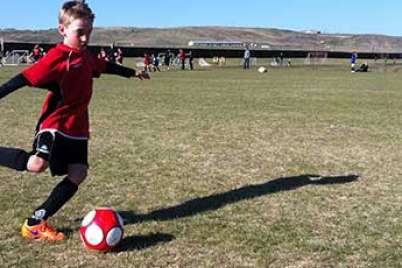
Kids’ movement skills are declining. Here’s how we can help them catch up
We hear increasingly often that kids are losing the ability to move well. Reports and studies from countries around the globe, from Australia to Ireland, have been pointing to the decline in children’s fundamental movement skills for a decade now.
Even parents are starting to express worry that their kids lack basic skills. Their concern is reflected in the dozens of comments Active for Life has received in response to our 2016 article describing how to teach kids to sprint.
Why the concern?
It’s not necessary to be a medical expert to see that fundamental movement skills (FMS) and physical literacy are needed to live our lives. Even if our kids don’t aspire to compete at the Olympics, we know their ability to move well is going to have a big impact on their health and quality of life for years to come.
Skills such as throwing and striking are essential to many sport, recreation, and fitness activities, but they are also used in occupations ranging from carpentry and courier delivery to automotive mechanics and mining.
Then there’s the need to meet simple daily demands such as moving furniture, walking on icy sidewalks without falling, and lifting and carrying groceries.
Teachers and coaches see the decline
Darren Russcher, a youth soccer coach with the TSS Academy in Richmond, B.C., is one of many sport coaches and teachers who have witnessed the decline in children’s movement abilities in recent years. While participating in a study to measure the effect of simple physical literacy warm-up exercises for nine- and 10-year-old players, he was surprised by their lack of balance and coordination.
“My shock came from watching the kids try to run backwards, or turn while running backwards to face forward,” says Russcher. “I would say about three or four of 10 would fall over initially.”
Glenn Young is the retired physical education and athletics coordinator for the Surrey School District, B.C.’s largest. Over a decade, he ran a program that trained more than 10,000 Grade 6 and 7 students in a variety of fitness components and fundamental movement patterns.
“It was clearly evident that the Grade 6 and 7 students lacked basic levels of any fitness as well as really poor movement mechanics,“ says Young. “However, as they were taught how to move, they became efficient movers.”
Learning movement skills later
Young’s observation is consistent with a 13-year Australian school-based study that examined the fundamental skills of children ages nine to 15. The skills of half the students were alarmingly poor with each year’s survey, but they improved when policy was changed to better support the teaching of movement skills in the physical education curriculum.
Another Australian study showed that children were able to improve their movement skills through both organized and non-organized physical activity, as did an Estonian study that looked specifically at the effect of activity outside of school. All these studies showed that it was still possible for kids to catch up in their movement skills even if they missed the early optimal periods of learning.
How parents can help their kids
Fortunately, it’s never too late to improve your movement skills. Parents can help their kids catch up in their movement skills by playing with them at home and by registering them in quality sport programs.
The Activities section here at Active for Life provides suggestions for simple home-based games that develop skills such as throwing, catching, jumping, and more. Parents who want to follow a little more structure can use the AfL Playbook, which organizes many of these games and activities into a daily program.
We seem to be witnessing a general decline in fundamental movement skills in children everywhere. However, parents can make a difference by understanding how to help. By proactively registering our kids in recreation programming and playing together at home, we can help to ensure that they get what they need to live fuller, healthier lives.
Further reading:
Physical literacy checklists for kids age 0-9
The sure-bet recipe to raise kids who love (and want) to get active





